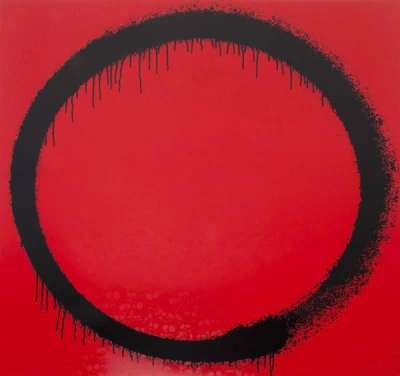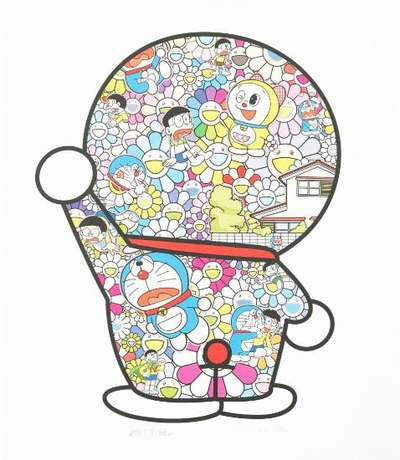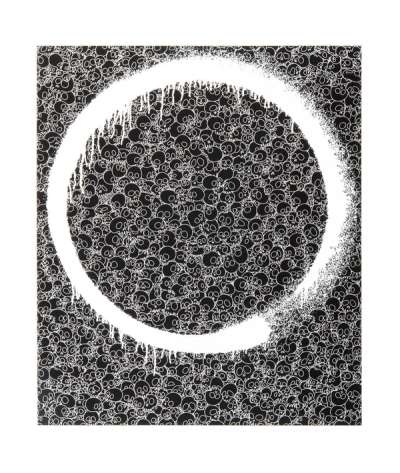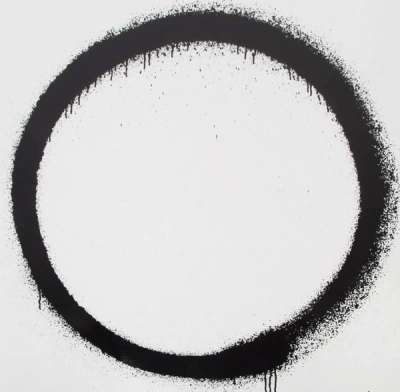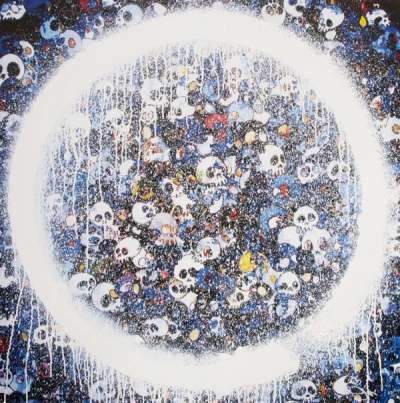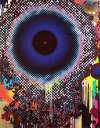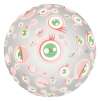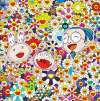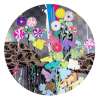Enso
Takashi Murakami's Ensō series comprises of prints featuring the Ensō (circle) symbol. Originating in Zen Buddhism the symbol represents a moment of enlightenment and spiritual purity. The collection reflects Murakami's own journey of self-discovery and spiritual growth, including his determination to merge traditional and contemporary influences, as he combines brushwork with spray paint.
Takashi Murakami Enso For sale
Enso Value (5 Years)
Sales data across the Enso series by Takashi Murakami varies by print. While standout works have sold at auction for up to £5905, other editions in the series remain rare to market or have yet to appear publicly for sale. Of those tracked, average selling prices have ranged from £1380 to £1380, with an annual growth rate of 2.97% across available data. Collectors should note the discrepancy in performance between more visible and lesser-seen editions when considering value potential in this series.
Enso Market value
Auction Results
| Artwork | Auction Date | Auction House | Return to Seller | Hammer Price | Buyer Paid |
|---|---|---|---|---|---|
 Doraemon In The Field Of Flowers Takashi Murakami Signed Print | 28 Jan 2024 | SBI Art Auction | £1,148 | £1,350 | £1,600 |
 Amitabha Buddha Takashi Murakami Signed Print | 14 Feb 2022 | Phillips Hong Kong | £1,063 | £1,250 | £1,650 |
 Enso The Heart Takashi Murakami Signed Print | 30 Sept 2020 | Christie's New York | £638 | £750 | £950 |
 Enso Facing The Pitch Black Void Takashi Murakami Signed Print | 10 Apr 2019 | Tate Ward Auctions | £978 | £1,150 | £1,500 |
 Enso World Filled With Light Takashi Murakami Signed Print | 10 Apr 2019 | Tate Ward Auctions | £978 | £1,150 | £1,500 |
Sell Your Art
with Us
with Us
Join Our Network of Collectors. Buy, Sell and Track Demand
Meaning & Analysis
Ensō is a collection of prints produced by the inspiring Japanese artist, Takashi Murakami. Many of the works in this collection were exhibited in 2015 at a Pop-Up exhibition of the same name at the Kaikai Kiki Gallery in Tokyo. All the prints in this collection feature the Ensō, a circle that is hand-drawn freely in one uninhibited brushstroke. The symbol is used in Zen, a school of Mahayana Buddhism to express a moment when the mind is free to let the body create. The Ensō is also used to symbolise enlightenment, strength, elegance and the universe.
The subject of these new paintings is one of the most famous motifs in Zen painting, the Ensō (literally circle) that symbolises emptiness, unity and infinity in Zen Buddhism. The Ensō is also considered the prerequisite to every act of creation, a moment when the mind is free to let the body create. Traditionally produced using a brush in one fluid and highly mastered stroke, the emphasis on being made with one stroke means the circular shape does not allow for any wavering or change of heart.
The collection features a range of variations of the Ensō. The Ensō is conventionally characterised by the minimalism of traditional Japanese aesthetics. Interestingly, in this collection, Murakami fuses a traditional painting style with more contemporary influences such as spray painting. Some of the designs such as Agama and Amitabha Buddha are simple, favouring the minimalist aesthetic that is often associated with Japanese painting. In these prints, Murakami renders the Ensō in white against a plain backdrop. Others are executed in Murakami’s unique visual style, with the artist spray painting the symbol over his signature cartoon motifs, as seen in Enso Facing The Pitch Black Void in which the white Ensō stands out against a black and white skull backdrop.

